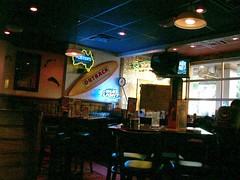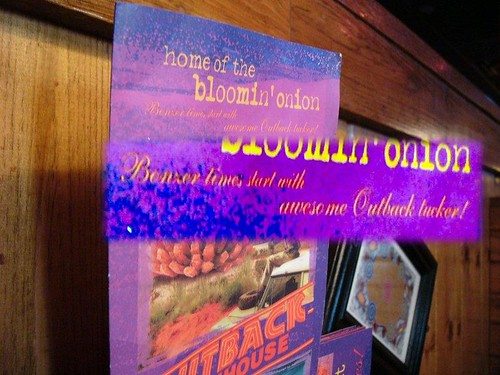Well, I'm over whatever funk I got into about my PhD. Tis all back to normal again, and now I'm merely tearing my hair out over the paper I'm currently trying to write.
Anyway, clearing the backlog of what I've been up to.. back to
LA. I had Saturday afternoon to kill, so I went and re-walked along
Long Beach; I didn't go as far as last time, but I did get to that
pier again (
map). It wasn't all that satisfying really - I've seen both sides of the Pacific now, and it looks pretty much the same from both sides. I still had a little time, so I asked myself -
what would Cthulhu do? So I headed back inland.
Not far into my sojourn back downtown, I was wolf-whistled at. This was not a bad start, so I looked around to find the source of this welcome attention, and it was..
..a god-damned parrot. Sitting on this dude's shoulder. Bloody
pirate. Ego crushed, my inner geek took over and I caught the bus to the nearest bit of big engineering - the
Queen Mary.
Its a big ole boat, and apparently the last big Atlantic liner in its class that's all in one piece. It serves as a floating hotel now, but the sheer size of it is still quite impressive. There was plenty going on around the place (including a
cheerleading tournament), so the area around the ship had a friendly buzz which was distinctly lacking on my last visit. If you wanted to, you could go for a tour around the area on a
segway scooter. These bizarre vehicles are truly weird to watch, and now that I've seen people scooting around on them, quite unappealing.
However, something that stopped me dead in my tracks, something that sucked me in by its sheer
monstrous kitsch tackiness, was an outlet of the
Outback Steakhouse:
Folks, this was kind of surreal. I have to confess, I've never been to an Australian theme pub (and there are quite a few of them around), so visiting an 'Aussie' theme restaurant was a little startling. The food and the service was nice enough (and yes, export Fosters is actually barely drinkable) - however, the interior of the place was a sight to behold. The place was literally infested with kangaroo and koala motifs, with surfboards and boomerangs liberally nailed to walls. It was a little unsettling, like stepping into a version of what I imagined Australia was like before I moved there.
However, the decor had nothing on the
menu. "Bonzer times start with awesome Outback Tucker" - I can't make this stuff up. The signature dish was this abominable giant fried onion thing (an Australian
ab-original!), coupled with such rarities as the "Too Right French Onion Soup" and "
Prime Minister's Prime Rib". On the drinks menu, they even managed to insert a 'h' into 'Bondi'. It was, for the little time I was at the restaurant, like being in
another world.
In an even stranger turn of events, this theme restaurant franchise is now
opening restaurants in Sydney (yes, that's an American-based Australian theme restaurant operating in Australia). The local
menu isn't quite so hideously kitsch ("no rules, just right - g'day mates!"), but it'll be interesting to see how it is received in the long run.
Anyway, now I should get back to writing that paper ;)




